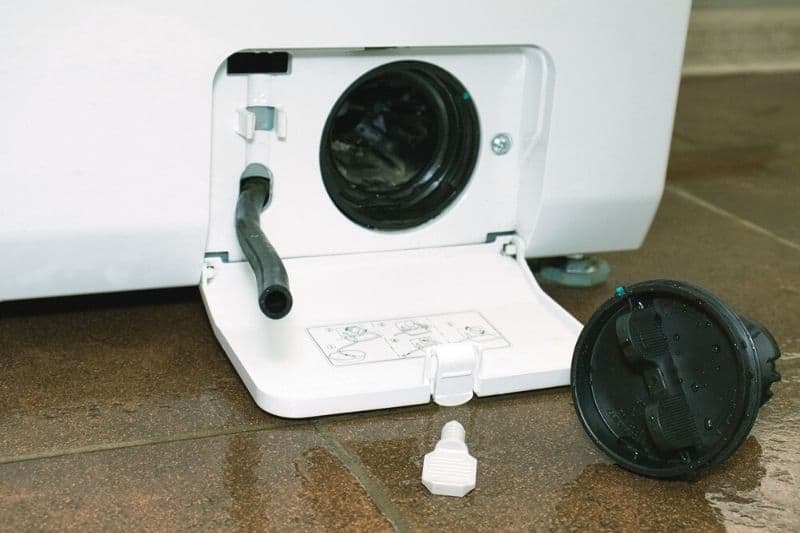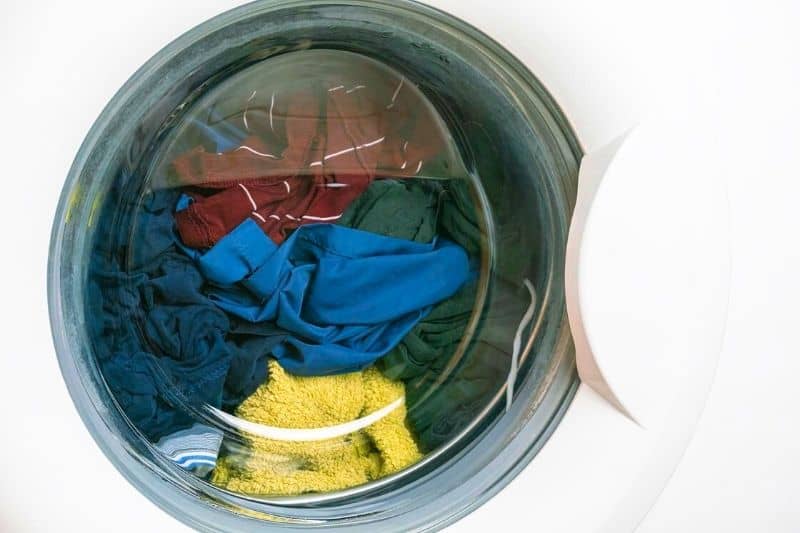A broken washing machine door can be a serious problem. Not being able to wash clothing, bedding and other fabrics can spell trouble very quickly for families, and no matter how well you look after your machine, the door can break out of the blue or just get jammed.
There is a range of problems that could potentially cause this issue, from drainage problems to faulty locking mechanisms.
Drainage Problems
A drainage problem is one of the most common causes of a locked door. If you can see water in the drum, it is likely that this is the cause.
Washing machine doors lock during the cycle, and if the machine stops mid-cycle when it is still full of water, the door is unlikely to unlock automatically.
If you decide to proceed and open the door manually to retrieve the laundry, be prepared with a mop and some towels to spread over the floor to catch the water.
To prevent drainage problems, it is important that you keep the washing machine clean. The filters, drains, and pump can all collect debris over time, and this can prevent the washing machine from draining effectively.
Pump Filter
If you have determined that a drainage problem is the cause of the locked door, the first ideal step is to drain the machine.
One way to do this is by clearing the blockage out of the drain filters, or the pump filter at the front of the machine.
You might find that when you remove the filter to clear them that the water comes flooding out, so make sure that you have a container and some towels on the floor ready to catch the water.
A common problem in washing machine pump filters is caught debris, such as lost coins, hairpins, or pieces of plastic. Remove the filter from the front of the machine and feel around on the inside of the machine for lost items or debris.
Once you have cleared the pump filter, replace it in the machine. Turn the machine back on and try to run just a drain cycle on its own.
If the machine drains, you have solved the problem! Once it has emptied and finished the cycle, you should then be able to open the door.

Drain Hose
Some machines have a drain hose in the front of the machine. Place a flat tray underneath the end of the hose to catch the water and pinch the hose whilst you remove the plug.
As you release the end of the hose, the water should start to drain from the machine. If the machine was full, you might find that you need multiple containers to completely drain it.
Once the machine has drained, you should be able to open the door and remove the laundry.
After removing the laundry, take the time to check the pipes, hoses, and filters for blockages to locate the cause of the problem.
Run an empty cycle on the machine to see if it drains. If the machine doesn’t drain again and you haven’t been able to find a cause, consider calling out a technician in case there is a fault that needs repairing.
Pressure Switch
If your washing machine has a pressure switch and this is faulty, the machine cannot reset and unlock the door.
To fix this problem, turn the machine off at the mains, and wait for five to ten minutes. After waiting, the machine should reset, and you should be able to open the door as normal.
Faulty Interlock
Front loading washing machines tend to have a safety mechanism known as an interlock. This is what locks the door during the cycle so that you cannot open the door whilst the machine is running.
Shortly after the cycle has completed, the door should unlock automatically. If it doesn’t, the interlock could be faulty.
A washing machine that has been used constantly in a short space of time can overheat, and this can stop the interlock’s circuits from working.
Washing machine door handles tend to be quite fragile, so it is crucial that you do not try to force them as it could damage the lock.
Unplug the machine from the mains and allow it to cool down over a period of several hours.
Once the machine and interlock have cooled down, you should be able to open the door. If the door still will not open, consider calling a technician to have a look.
Thermal Lock
Some washing machines have a thermal lock on the door, and these should disengage after a cycle has ended.
This type of lock works by expanding as it heats up, which is why it takes a few minutes after the end of the cycle for the door to unlock.
If the lock is just not disengaging, unplug the machine from the mains, and leave it to cool down. Leave the machine for around five minutes, then come back and try again.
Sometimes thermal locks get stuck and striking the area of the door with the catch area may enable you to release the lock and open the door. But be careful when doing this technique, as you don’t want to have to replace your washing machine door entirely!
Broken Handle
If the handle on the washing machine faces outwards, you may be able to release the catch with garden wire, nylon string or fishing line. Wrap string around the edge of the door crossing the strings over on the hinge side of the door.
Pull the string firmly to release the door catch. The door should spring open, allowing you to remove the laundry.
See the string method here in this video we found on YouTube:
If the handle on the washing machine faces the other direction, you can access the handle’s catch from the top of the machine.
Unscrew the top and lift it off. You should be able to see the catch on the door from the inside, and you can push this to release the door.
Call a Professional
If none of the above tricks works, or you just are not sure what type of lock your washing machine uses, call a professional.
Many manufacturers publish troubleshooting guides online or have helpful technical support teams that may be able to assist you in solving the problem.
If you rent and the machine was in place when you moved in, your landlord or agency may have encountered the problem before and know how to rectify it.
If you have exhausted all these options and the machine door still is not opening, call a technician in case there is a serious technical fault.

Lover of coffee, painting, and all things cute and fluffy. I’m always on the lookout for easier, more gentle ways to tackle awful household chores.






